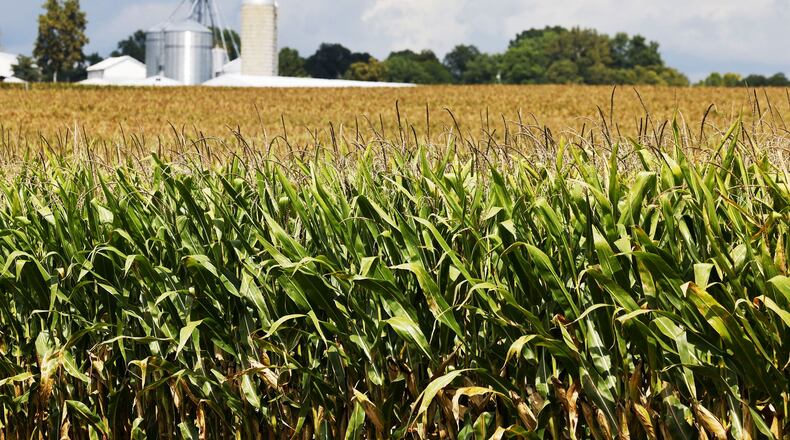“I’ve got a field out currently,” said Aultman, who is also Darke County commissioner.
This year the U.S. Department of Agriculture encouraged double-cropping by streamlining crop insurance approvals in more than 1,500 counties nationwide where the practice seems viable.
The announced hope was that this would increase wheat yields, a response in part to Russia’s invasion of Ukraine. Both countries are major wheat producers, but their exports have been disrupted by sanctions against Russia and Russian blockade or capture of Ukrainian ports.
Double-cropping often results in smaller individual yields, but the two crops combined would still be larger than a single crop, agriculture officials said.
Ohio State University and the University of Illinois published a study in August that found double-cropping wheat and soybeans in southern Illinois produced roughly a third more value per acre than a single soybean crop. Authors acknowledged that results could be lower elsewhere, or bring in less if wheat prices drop.
Writing for the OSU extension service on the subject, Laura Lindsey noted that double-cropping soybeans with wheat differs from growing soybeans alone. Lindsey, an associate professor in OSU’s Department of Horticulture and Crop Science, wrote that a key factor is planting soybeans as early as possible, so farmers might consider pairing it with winter barley, which is harvested two weeks earlier than winter wheat.
Given Ohio’s major existing crops, planting soybeans after wheat “makes a lot of sense,” Lindsey said. The state’s wheat harvest is probably too late to successfully double-crop wheat and corn, but there may be interest in pairing wheat with sunflowers or forage for livestock, she said.
“If nothing else, soybeans are a nitrogen-producing plant,” Aultman said. “Even if you don’t harvest the soybean crop you’re getting some benefit.”
The nitrogen helps replenish the soil for the next year’s wheat crop, he said.
“The last few years we’ve been able to harvest a crop that’s been substantial enough to make an economic difference for farmers,” Aultman said.
According to the U.S. Department of Agriculture, in 2021 Ohio had nearly 77,000 farms, averaging 176 acres each. Soybeans were the state’s top crop in 2021, covering 4.9 million acres and valued at $3.6 billion, followed by corn at 3.6 million acres and $3.5 billion in value, according to USDA statistics. All other crops were much smaller in acreage and value; wheat was in fourth place, after hay, covering 580,000 acres with a crop value of $278 million.
Lindsey and other researchers created a calculator of costs for wheat and soybean crops, separately and combined, using default prices. According to that, the most profitable combination would be wheat followed by soybeans, plus selling the wheat straw, she said.
Probably the biggest challenge to successfully double-cropping with soybeans is whether there is enough rain, Lindsey said. But too much rain on the wheat crop – delaying harvesting – can substantially decrease soybean yields for each day planting is delayed after late April or early May, she said.
Some years, when there’s early frost or not much rain, a second crop of soybeans may not be worth harvesting and selling, Aultman said.
“It’s a roll of the dice when you put it out,” he said.
At least it will still improve the soil, and soybeans are always good to have due to their many uses: in biodiesel, cooking oil, cleaners and even crayons, Aultman said.
If a crop turns out well, there’s no problem in selling soybeans, he said.
About the Author

